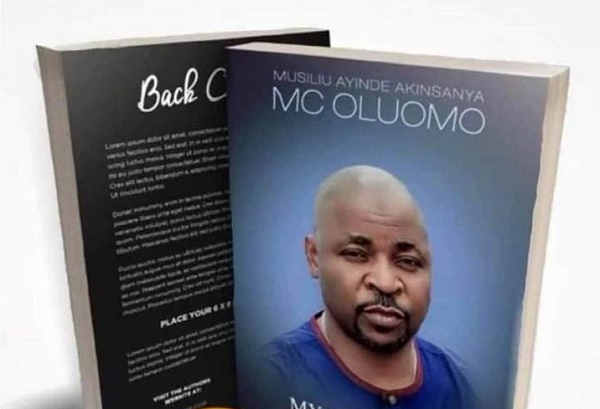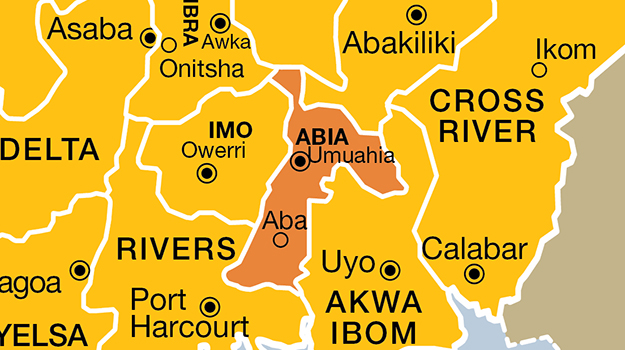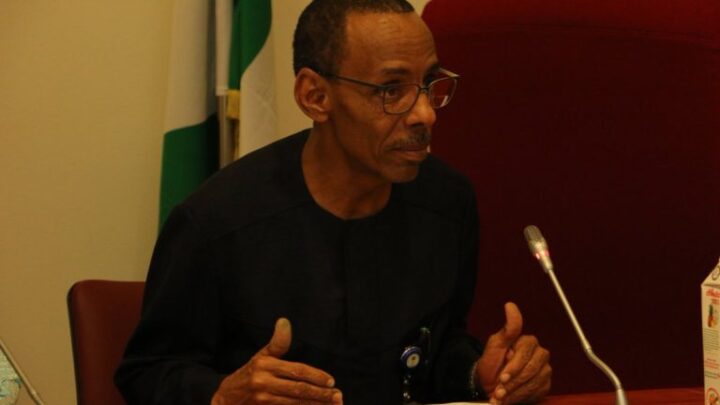Sometime in November, a Nigerian professor of art history, Moyo Okediji, announced on Facebook that he was building an art gallery in Austin, Texas, US. He wrote that the gallery is nearing completion and would hopefully be ready by January 2021. That is a timeline of about three months.
Eight years earlier, the National Gallery of Art, an agency under the ministry of information and culture, made a similar announcement to build galleries in Taraba, Niger, Anambra, and Imo states. To date, none of the galleries are near completion, let alone open for business.
Although abandoned government projects litter many states in Nigeria, very little is reported about neglected art projects.
In fact, the general assumption is that the government does not fund art due to a paucity of funds and zero interest in creative works. While this claim may be true, it is often exaggerated.
Advertisement
The federal government in 1993 established the National Gallery of Art with headquarters in Abuja and branches in the six geo-political zones of the country, to collect, preserve and document the Nigerian contemporary artworks.
Inside sources allege that directors at the gallery have misappropriated over N200 million released for the construction of galleries in the four states, all within a period of 10 years.
While investigating this claim, The ICIR discovered that the directors also have failed to account for N394 million within the same period, according to the record obtained from the office of the accountant general of the federation (OAGF).
Advertisement
The ICIR compared records obtained from the OAGF with records of the National Gallery of Art.
While OAGF’s records show that the gallery was paid a total of N2.7 billion in capital allocation in the last 10 years, it could only account for N2.3 billion, showing that nearly 15 percent of federal allocation has gone missing in one decade.
But the money did not disappear in one single tranche.
In 2010, when OAGF released N629, 141, 77.43 as capital allocation, the gallery only accounted for N539,128,305.43. In 2011, N199,674,285.77 was released, but only N129,11,500 was accounted for. In 2012, a sum of N263, 516, 135.57 was disbursed while the agency accounted for N191, 002,427.26. In 2013, the gallery accounted for N300,127,739.60 out of N333, 861,059 allocated as capital budget. The following year, NGA received N247,202,373.90 but declared N202, 189, 873.90. In 2018, NGA only declared N361, 999,174.72 against N444, 567, 706.23 received in capital allocation.
Advertisement

Except for three years (2015, 2016, and 2019), when the records of a capital allocation from OAGF correspond with the records tendered by NGA, the books are not balanced for the other years. So, how did over one-third of a billion naira disappear?
The ICIR wrote FOI letters both to the gallery and OAGF seeking an explanation for the missing fund. The director of funds at the OAGF, Sabo Mohammed, in his reply, wrote that: “The Office of the Accountant -General of the Federation had cash-backed in full all the Capital Allocations released to National Gallery of Art within the period requested.” In other words, capital projects at the Gallery for which funds were released have all been paid for.
However, Mohammed directed the reporter to the budget office and cash management department of the ministry of finance for further confirmation.
In an interview, Muhammad Saleh, the director at the cash management department, told The ICIR that the office was created in 2018, so it was responsible for disbursement only for the last two years.
Advertisement
“The Accountant General Office was directly responsible for the disbursement between 2010 and 2018, and whatever record given by the Office is accurate,” he said.
The ICIR then contacted Abdullahi Muku, the director-general of the National Gallery between 2010 and 2019, for clarification.
Advertisement
In a WhatsApp message sent to The ICIR on 13 November 2020, he wrote: “I left office honourably. I was highly celebrated when I was leaving. I should please be allowed to manage my life. If there is anything that I deserve, it is a commendation for my achievement while I served the nation my fatherland as DG, NGA.”
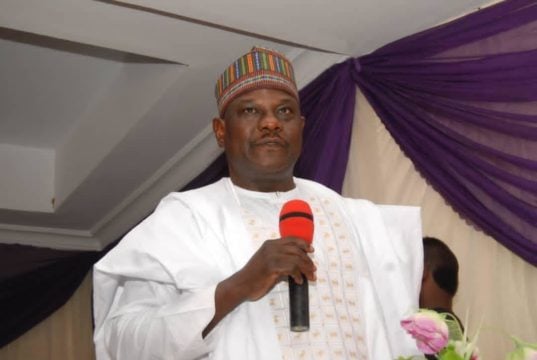
Not satisfied with the response, The ICIR requested that he answer specific questions about the allegation of misappropriation levelled against him.
Advertisement
On Wednesday, November 18, 2020, Muku showed up at the Abuja office of The ICIR, where he was asked to explain the disappearance of N394 million in six years.
The former DG told The ICIR that he could not explain the difference because he is no longer in service.
Advertisement
“I have left the office since March 2019; I no longer have a recollection of the money received and money spent,” he said.
When shown the records of capital allocations obtained from his former office and the OAGF, he still could not offer a useful explanation.
Instead, he urged the reporter to dismiss “smear campaigns” launched against him by some gallery staff members he described as “disgruntled elements.”
According to him, the allegation of corruption started while he was in office.
“They have used media to attack me and destroy my reputation. They have failed, and that is why they came to you too,” Muku said.
Colleagues have indeed petitioned the former gallery boss, accusing him of stealing from the public purse, which, according to them, he successfully masterminded with other directors’ help.
The suspected accomplices, according to the whistleblowers, include the immediate past acting director-general of the parastatal, Simon Ikpakronyi; director of finance and account, Henry Achugbu; retired director of document, Lilian Kangan and Adamu Tanko of curational service department.
Allegation of stealing project funds
In the petition reportedly sent to the anti-graft agency, a copy of which was obtained by The ICIR, Muku and Ikpakoroyin, who was then the director of research and publications, together with other directors, were accused of “diverting” another N359,000,000 between 2013 and 2019. The allocation was meant for research and other educational projects.
Other funds allegedly misappropriated by the directors include N68 million for the purchase of library books and equipment, N25 million for the purchase of computers, and N55 million for furniture and fittings.
In 2018, just a year before Muku retired, N5 million was released to publish a compendium of artists, but to date, the publication does not exist.
When The ICIR asked about the publication, the former DG said he was unaware of the compendium.
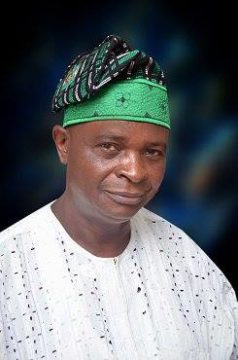
Similarly, Muku and other directors were accused of stealing from the funds allocated between 2011 and 2019 to construct galleries in Imo, Taraba, Anambra and Niger states.
For example, between 2011 and 2019, a total of N67.2 million was released for the construction of Oriental Heritage Galaxy Centre Mbutu, Imo state N28 million for the construction of National Gallery of Art Centre, Ukpor Nnewi South Anambra state, and N11.9 million for the construction of Kulili Gallery of Art Centre, Kulili, Lau, Taraba state.
Other projects captured in the 2019 budget as ERGP27105289 include an office building in Port Harcourt, Rivers state and Kano, Kano state. The total sum was N57,542,330.
According to the 2015 report from the office of auditor-general, a consultancy contract to organize and manage National Gallery of Arts Management/Curators Retreat was awarded to a company in the sum of N7 million on 1st December 2013.
The auditor general reported that “a payment voucher was raised for the contract sum on the same day the contract was awarded, contrary to extant regulations. But all relevant supporting documents to back up the payment were not sighted, lending credence to the fact that the voucher was raised to effect payment without work done.”
Similarly, the contract for the construction of Nupe Gallery in Niger state was awarded to a company in 2012 in the sum over N80 million. Upon further examination, it was observed that the sum of N5 million was charged as “contingencies” in the bill of quantities (BOQ). The sum of N98.8 million, inclusive of VAT and withholding tax, was paid to the contractor at the end of the project. This in effect means that an overpayment has occurred and the contractor did not pay the relevant tax.
The auditor noted that contingency provision in contract awards do not always occur, and where they do, extant regulations provide that they should be activated by a contractor’s written application detailing item by item requirements and costs, subject to the approval of the awarding body.
The auditor general, therefore, called the attention of former DG Muku to these discrepancies through the audit inspection report reference No. OAuGF/P&PAD/NGA/08 dated 21st September 2015. And when Muku responded, the auditor noted that his response dated 7th October 2015 was “unsatisfactory”.
The whistleblowers who spoke to The ICIR on the condition of anonymity said the directors used fraudulent contractors as conduit pipes for the diversion of project funds who eventually returned the payment in foreign currency through the account of selected junior staff and the Gallery’s cooperative society.
The suspected staff named in this racket include Chibuzor Udemba, Vincent aka Vamaco, contractors and consultants; Onanusi Olakitan, the cash officer and Musa Mudashiru, the chairman of the Gallery’s cooperative society.
Mudashiru denied all the allegations against him in a phone interview with The ICIR. “I am not part of them. If I am, I should have benefited from certain privileges that other senior staff benefited from.”
Hold lawmakers accountable for uncompleted galleries, says former DG.
The former Gallery boss also denied all the allegations. According to him, most of the gallery’s construction projects are constituency projects initiated by the lawmakers, and they influenced the disbursement of the funds.
“Those galleries are constituency projects; they were not initiated by us,” he told The ICIR.
According to him, the Mbutu gallery project was the project of the former deputy speaker of the house of representatives, Emeka Ihedioha and Taraba gallery by Jerry Samuel Manwe, who was the house of representative member from Taraba and the chief of staff to former Speaker Yakubu Dogara.
Muku was referring to “budget padding” by Nigerian lawmakers, a practice that has become the norm in the National Assembly.
Every year, legislators of the two chambers rewrite the budget, introducing items outside the estimates prepared and submitted by various ministries, department and agencies (MDAs) through the president. As a matter of yearly ritual, both chambers include what they call constituency projects whose costs are arbitrarily fixed by legislators.
In 2016, Honourable Abdulmumin Jibrin, a lawmaker from Kano and former chairman of the house committee on appropriation, had called Nigerians’ attention to the criminal conspiracy among members of the Senate and the House of Representatives.
Jibrin disclosed that the lower chamber unilaterally included 2,000 items in the 2016 budget.
Also, a human rights lawyer, Femi Falana, alleged that constituency projects worth over N100 billion were inserted into the national budget. The Senate and the House of Representatives allocated to themselves N60 billion and N40 billion, respectively.
Drawing from sections 4 and 5 of the 1999 Nigerian Constitution (as amended), lawyers have condemned lawmakers for initiating constituency projects. They argue that such a practice is the exclusive role of the executive, but legislators remain unpersuaded.
Between 2011 and 2019, a total of N67.2 million was inserted in the National Gallery’s budget to construct the Mbutu Gallery in Imo state, according to the document obtained from the agency. But Muku tried to exonerate himself by shifting blame to the lawmakers.
“We are in a very sorry situation in this country. The National Assembly is our major problem. Without them, Nigeria will move forward,” he said.
By pointing an accusing finger at the lawmakers, the former DG indirectly cast aspersions at himself because his office was used for the personal enrichment of public officers. Yet, he played down his own culpability by simply saying, “I did not say I am a saint too.”
On December 22, The ICIR sent an SMS and WhatsApp messages to Ihedioha who was then representing Aboh Mbaise/Ngor Okpala Federal Constituency of Imo State to explain why the Mbutu gallery remains uncompleted nearly nine years after the project’s contract was awarded. But he did not respond. The Centre called him again on Tuesday, 29 December 2020 and when he answered, he tacitly directed the reporter to contact the National Gallery of Art about the project. He did not say anything further before he cut the call.
Manwe was also contacted on January 6 via the Facebook account he set up to engage his constituency in Taraba state. The ICIR asked him to explain why the Kuluu Lau gallery’s construction, to which N12 million has been released, remain abandoned for more than eight years. But the lawmaker did not respond.
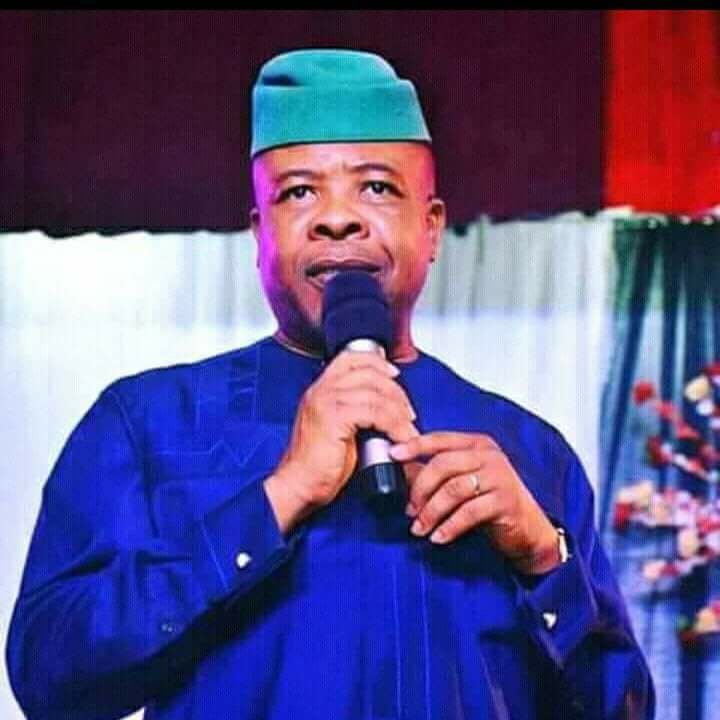
Meanwhile, president, Society of Nigeria Artists, Oliver Ewonwu, is unhappy with the country’s state of the arts. He is even more disappointed with the administrators’ poor performance in the art sector. There is no befitting national gallery to warehouse many artworks created in Nigeria, he lamented.
In an interview with The ICIR, he questioned the federal government’s idea of setting up galleries in all states when the government could have located galleries only in Lagos and Abuja, the two capital cities.
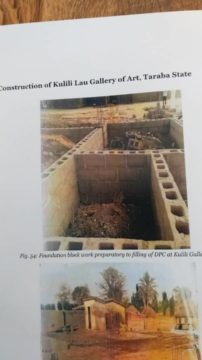
Gallery’s finance director explains differences in conflicting records but silent on other disbursements.
The ICIR contacted the current DG of the gallery, Ebetan Ivara, via Whatsapp, on the allegation of misappropriation in his office, but he exonerated himself.
His reply: “I am sure you are aware that the period you are investigating the allocations, I was not here as the DG. I am barely four months old in the agency and have not been furnished with this account and expenditures. You should carefully handle your investigation with him and not publish what will run my Agency down and bring new administration into a bad light. You may come to my office from the 5th of January to give me time to find out the DFA’s responses to the alleged financial expenditures.”
True to his word, on January 13, a response from the director of finance and account (DFA), Achugbu, arrived.
He wrote that: the “appropriation /budget performances as forwarded to you[The ICIR] are in line with our budgetary allocations, releases and expenditure for the relevant years.”
However, he added that “the information supplied by the Accountant General included releases from the services wide votes which are not part of the appropriation/budgetary allocation, or budget releases but are accounted for separately.”
In other words, the previous records of releases sent to The ICIR by Achugbu did not contain other disbursements to the Gallery. In a letter dated December 17, 2020, and sent to the director of finance, the Accountant General also confirmed the omission.
“I am directed…to inform you that from the records available to this Office, the discrepancies you referred to may be about releases effected from Service Wide (Capital) Vote effected through AIE instrument in favour of your Agency. It may appear you did not capture such releases in your report,” director of funds, Mohammed, wrote.
It remains suspicious, however, that Achugbu failed to capture the releases in the report earlier submitted to The ICIR, an action that violates the provision of the Freedom of Information Act (FOIA) 2011.
According to the FOI Act, a deliberate attempt to distort public information is a violation. Section 10 of the FOIA states that: “It is a criminal offence punishable on conviction by the Court with a minimum of 1-year imprisonment for any officer or head of any government or public institution to which this Act applies to willfully destroy any records kept in his custody or attempt to doctor or otherwise alter same before they are released to any person, entity or community applying for it.”
Rather than explain why an important financial record was omitted in the document submitted, Achugbu praised his agency, saying the relevant government authorities have never found the agency wanting. But this claim is untrue.
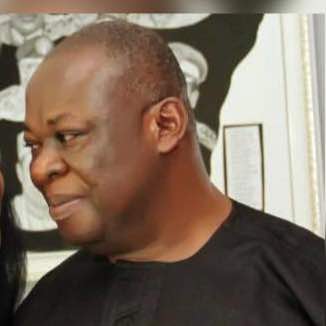
As of May 2010, the Economic and Financial Crime Commission (EFCC) reported that it had 52 “high – profile” ongoing cases, and the published list of those cases includes prosecutions of Joe Musa, another former director-general of Abuja’s National Gallery of Art.
In a petition sent to the EFCC, the former DG was accused of corrupt practices, including over-invoicing, inflated contacts, bloated wage bills, falsification of tour documents, and false claims on seminars, exhibitions and training that were never organised.
In addition, the former DG Muku had told The ICIR that lawmakers at every budget cycle include constituency projects in the budget of the MDAs and asked civil servants to bring the money through their chosen contractors and later ask them to retire it without executing the projects.
Okey Epia, the publisher of Orderpaper, a news website that covers the Nigerian parliament, told The ICIR in an interview that the practice of inserting constituency projects in MDAs’ budget by lawmakers has become the norm, though unethical.
Notwithstanding, he said heads of MDAs are indeed liable for all the allocation approved and released for projects that were later abandoned, and not the lawmakers.
“Indeed, lawmakers often insert constituency projects into the budget of the MDA, but legally speaking, it is the head of the agency that is liable for any misappropriation. The MDAs would be held responsible for any project failure.”
Explaining how the process works, Epia said constituency projects are inserted by lawmakers who would later send a contractor to bid for the project. The agency will eventually release the money to the contractor. Often, the project is abandoned midway or does not commence at all, but the money would have been shared among all the key actors, which sometimes include the head of parastatal.
The ICIR’s investigation shows that this sharp practice was rife during the administration of the former boss of the National Gallery of Art, Muku, and his predecessor.
This investigation was originally published by the International Centre for Investigative Reporting (ICIR).
Add a comment


